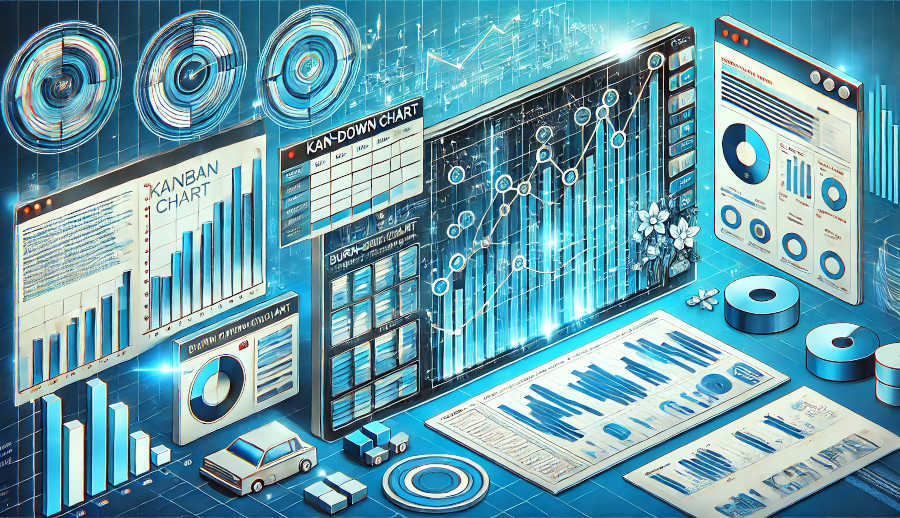Performance evaluation is a critical aspect of project management, and Gantt charts serve as a powerful tool for this purpose. By analyzing the chart, project managers can identify whether tasks are being completed on time, whether resources are being utilized efficiently, and whether the project is on track to meet its goals. This process not only helps in addressing issues promptly but also in making informed decisions to optimize the project’s trajectory. In this article, we will explore how to evaluate performance using Gantt charts, focusing on key aspects such as task progress, resource management, and risk assessment.
Understanding Task Progress
The primary function of a Gantt chart is to display the progress of tasks over time. By examining the chart, project managers can quickly determine which tasks have been completed, which are in progress, and which are yet to start. This visual representation allows for a straightforward assessment of whether the project is adhering to its timeline. For example, if a task that was scheduled to be completed by a certain date is still in progress, it indicates a potential delay that needs to be addressed. Evaluating task progress through a Gantt chart helps in identifying deviations from the plan early on, allowing for timely interventions.
Moreover, task progress evaluation is not just about tracking completion but also about understanding the quality of work being done. A Gantt chart can reveal patterns such as recurring delays in specific types of tasks, which may indicate underlying issues such as insufficient resources or lack of expertise. By analyzing these patterns, project managers can take corrective actions, such as reallocating resources or providing additional training to team members. This proactive approach ensures that the project remains on track and that the quality of deliverables is maintained.
In addition to tracking individual tasks, Gantt charts also help in assessing the overall progress of the project. By comparing the actual progress with the planned timeline, project managers can determine whether the project is on schedule, ahead of schedule, or behind schedule. This broader perspective is crucial for making strategic decisions, such as adjusting deadlines, reallocating resources, or revising the project scope. Ultimately, understanding task progress through a Gantt chart is essential for maintaining control over the project and ensuring its successful completion.
Managing Resource Allocation
Resource allocation is another critical aspect of project performance that can be effectively evaluated using a Gantt chart. The chart provides a visual representation of how resources are being utilized across different tasks, making it easier to identify any imbalances or inefficiencies. For instance, if a particular team member is assigned to multiple overlapping tasks, it may lead to burnout and decreased productivity. By analyzing the Gantt chart, project managers can redistribute workloads to ensure that resources are being used optimally.
Furthermore, Gantt charts can help in identifying underutilized resources. If certain team members or equipment are not being fully utilized, it may indicate an opportunity to reallocate them to more critical tasks. This not only improves efficiency but also helps in reducing costs. Effective resource management is essential for maintaining the project’s momentum and ensuring that all tasks are completed on time. By using a Gantt chart to evaluate resource allocation, project managers can make informed decisions that enhance overall performance.
Another important aspect of resource management is the ability to anticipate future resource needs. Gantt charts allow project managers to forecast resource requirements based on the project’s timeline and task dependencies. For example, if a critical task is scheduled to start in the near future, the project manager can ensure that the necessary resources are available and ready. This proactive approach minimizes the risk of delays caused by resource shortages and ensures that the project remains on track. In summary, evaluating resource allocation through a Gantt chart is crucial for optimizing performance and achieving project success.
Assessing Risks and Mitigating Issues
Risk assessment is an integral part of project management, and Gantt charts can play a significant role in identifying and mitigating potential risks. By analyzing the chart, project managers can identify tasks that are at risk of delay or failure due to dependencies, resource constraints, or other factors. For example, if a critical task is dependent on the completion of another task that is already behind schedule, it may pose a significant risk to the project’s timeline. By identifying these risks early on, project managers can take proactive measures to mitigate them.
In addition to identifying risks, Gantt charts also help in assessing the impact of potential issues on the overall project. For instance, if a high-priority task is delayed, the Gantt chart can show how this delay will affect subsequent tasks and the project’s final deadline. This information is crucial for making informed decisions about whether to adjust the project plan, reallocate resources, or implement contingency measures. By using a Gantt chart to assess risks, project managers can minimize the likelihood of project failures and ensure that the project stays on track.

Moreover, Gantt charts can be used to track the effectiveness of risk mitigation strategies. Once a risk has been identified and a mitigation plan has been implemented, the Gantt chart can be updated to reflect the new timeline and resource allocation. This allows project managers to monitor the progress of the mitigation efforts and make further adjustments if necessary. By continuously assessing risks and updating the Gantt chart accordingly, project managers can maintain control over the project and ensure its successful completion. In conclusion, evaluating risks and mitigating issues through a Gantt chart is essential for managing project performance and achieving desired outcomes.
Conclusion
In conclusion, Gantt charts are an invaluable tool for evaluating project performance. They provide a visual representation of task progress, resource allocation, and potential risks, enabling project managers to make informed decisions and take proactive measures. By understanding how to effectively use Gantt charts to assess performance, project managers can ensure that their projects remain on track, resources are utilized efficiently, and risks are mitigated promptly. This not only enhances the likelihood of project success but also improves overall team productivity and morale.
The ability to evaluate performance using Gantt charts requires a combination of technical skills and strategic thinking. Project managers must be adept at interpreting the data presented in the chart and using it to make informed decisions. Additionally, they must be proactive in identifying potential issues and taking corrective actions to address them. By mastering the use of Gantt charts for performance evaluation, project managers can significantly improve their ability to deliver successful projects.
Ultimately, the success of a project depends on the ability to effectively manage its various components, and Gantt charts provide a comprehensive tool for doing so. Whether it’s tracking task progress, managing resources, or assessing risks, Gantt charts offer a clear and concise way to evaluate performance and ensure that the project stays on track. By leveraging the power of Gantt charts, project managers can enhance their ability to deliver successful projects and achieve their organizational goals.
FAQ
1.How often should I update my Gantt chart to evaluate performance?
It is recommended to update your Gantt chart regularly, ideally on a weekly basis, to ensure that it accurately reflects the current status of the project. Regular updates allow you to track progress, identify any deviations from the plan, and make timely adjustments to keep the project on track.
2.Can Gantt charts be used for all types of projects?
Yes, Gantt charts can be used for a wide range of projects, from small, simple tasks to large, complex initiatives. The key is to customize the chart to fit the specific needs of your project, including the level of detail, the number of tasks, and the timeline.
3.What are some common pitfalls to avoid when using Gantt charts for performance evaluation?
Some common pitfalls include overloading the chart with too much detail, failing to update it regularly, and not using it as a dynamic tool for decision-making. To avoid these issues, focus on maintaining a clear and concise chart, updating it frequently, and using it proactively to monitor and manage project performance.
ARTICLE TITLE :Gantt chart making: How to evaluate performance ,AUTHOR :ITpmlib

















